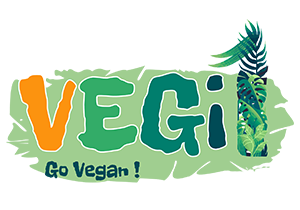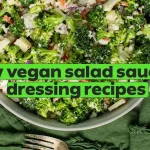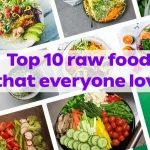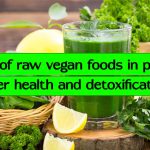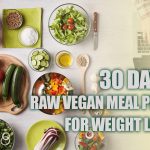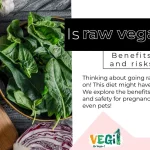How Do Raw Vegans Get Enough Protein?
Discover how I thrive on a raw vegan diet and get all the protein I need. Learn my secrets!
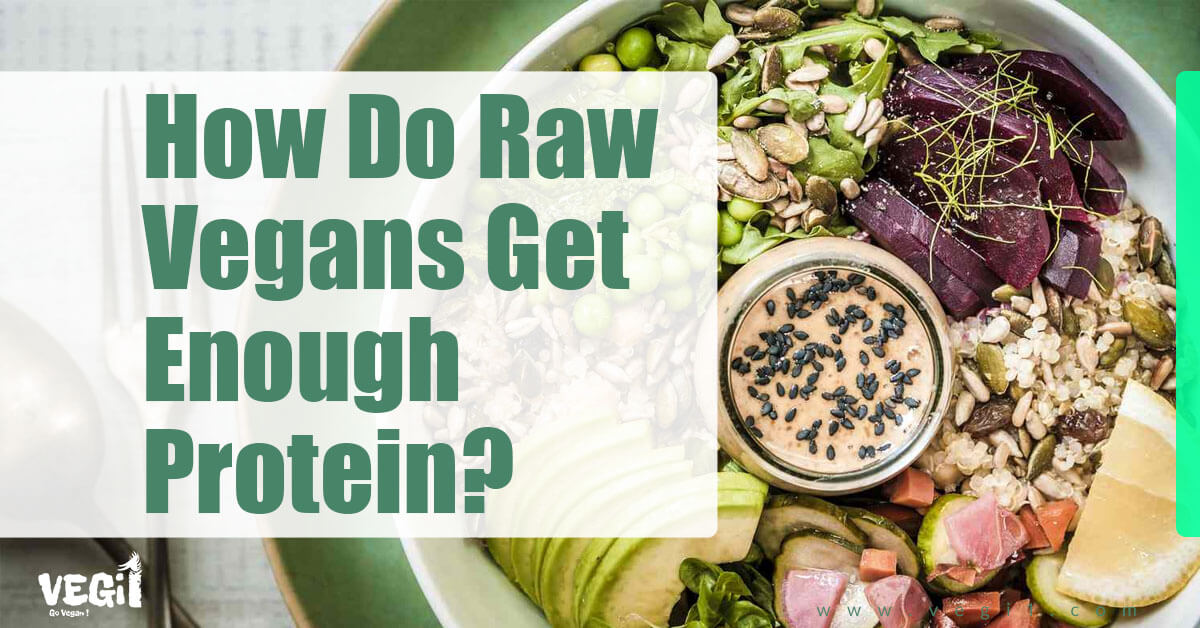
Raw veganism is a form of diet that is all about the consumption of unprocessed and plant-based ingredients, except all cooked and animal products. One of the common concerns about the Raw vegan diet is whether or not it offers enough protein, considering the limited options.
Many people associate protein specifically with animal products, however, it is very important to remember the fact that plant-based sources can fulfill this nutritional requirement. In this article, we will explore how raw vegans can meet their protein needs through a variety of plant-based supplies.
Protein is a vital macronutrient that is very critical for our overall health. It’s pretty much responsible for building and repairing tissues, producing enzymes and hormones, and supporting a sturdy immune device.
The encouraged day-by-day Allowance (RDA) for protein is zero. 8 grams is in keeping with a kilogram of body weight; however, this allowance may additionally vary depending on numerous elements, such as age, interest stage, and fundamental fitness.
You may find yourself asking How do you get protein from a raw diet?
This will surely be discussed further. You may also have asked yourself How to Get Enough Protein on a Raw Vegan Diet ? Some people follow a Raw vegan eating regimen because traditional animal resources of protein like meat and dairy are excluded.
However, based on people’s experiences, it’s honestly hardly possible to satisfy your body’s protein wishes through plant-based supplies by yourself.
That’s why I decided to write here the most complete raw vegan guide to getting enough protein, So, I tried the guidelines below and saw immense changes in my body. I will try to explain further in the next section.
Guidelines for getting enough protein from a raw vegan plan:
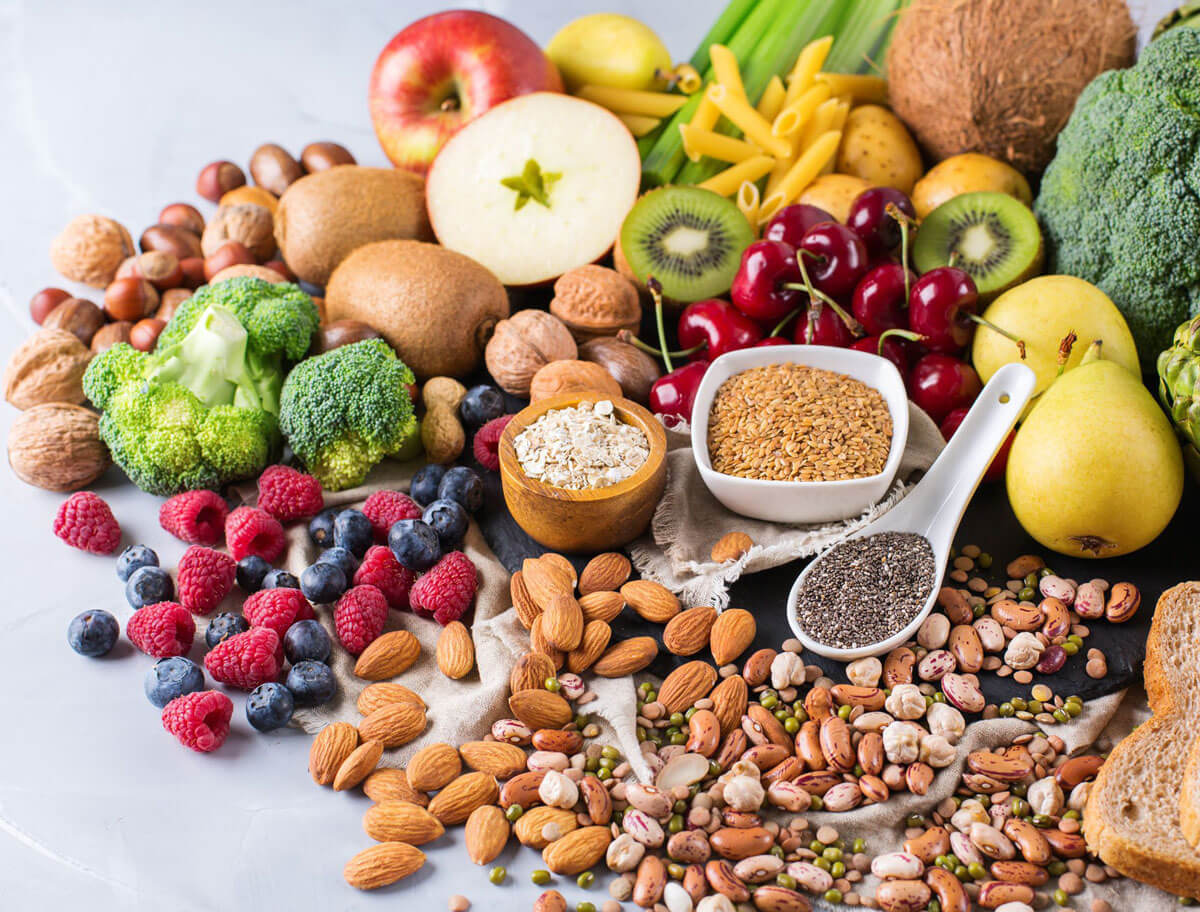
In this article you will read:
How can raw vegans get 120g of protein a day?
Achieving a protein consumption of 120 grams according day as a raw vegan may also appear hard; however, it’s achievable with the proper meals and meal-making plans. This was honestly pretty hard for me, too but with the right plans, I finally got my much-needed daily protein. Most raw vegans want around 0.8 grams of protein per pound of body weight, which might equate to around one hundred twenty grams for a person that weighs around one hundred fifty kilos. In addition to what I said above, here I suggest a few guidelines for getting good enough protein through a raw vegan weight-reduction plan:
– Try to eat lots of leafy greens.
Dark leafy vegetables like kale, spinach, collards, and Swiss chard incorporate the right amounts of protein consistent with calories. Go for large salad servings daily made with mixed vegetables. Kale, collards, spinach and chard are excellent sources for you. You’ll want around 2-4 cups per day. They provide 3-5 grams of protein per cup. I include these greens in my salads every day! Trust me, you will love these types of salads in time!
– Include sprouted legumes.
Legumes like beans, lentils, and peas are packed with plant-based protein. Lentils, beans and peas have more protein when sprouted. Eat 1/2 cup servings a few times per day. Soaking and sprouting them makes their protein more digestible and usable by your body. Add sprouted lentils, mung beans or pea sprouts to salads and dry crackers and enjoy!
– Nuts and seeds are protein all-stars.
Almonds, sunflower seeds, pumpkin seeds, hemp seeds, and especially nut butter provide protein along with beneficial fats. Carry a jar of nut or seed butter with you for an on-the-go snack. They can be a good substitute for popcorn during movies! Hemp seeds also provide 11 grams of protein in just 3 tablespoons. Sprinkle onto salads, smoothies, greens, soups, nut milks and more. Sprinkle these seeds on your dinner tonight and enjoy!
-Nut Butters.
Almond, cashew or pecan butters are easy to eat. Go for raw versions and eat 2-4 tablespoons at a time for 8-16 grams of protein each.
– Blend green smoothies daily.
Throw a handful of leafy greens along with banana, coconut water or plant milk, and a scoop of plant protein powder into a high-speed blender for an easy and tasty source of protein. This smoothie can help your skin too.
– Berries.
Though low in protein, berries like strawberries, blueberries and blackberries have around 1 gram each. Eating 1-2 cups daily contributes 8+ grams. I use berries every morning, and they are the best breakfast ever!
– Enjoy some spirulina and chlorella supplements.
These microalgae are almost made entirely of complete protein and provide over 50% protein by weight. Even a small tablespoon adds protein to your smoothies.
– Avocados contain more protein than other fruits.
One whole avocado provides around 5 grams of protein along with healthy fats and fiber. Enjoy sliced avocado as a dip with veggie sticks, or add it to salads. This is just another avocado toast, but with a twist!
– Include sea vegetables.
Sea vegetables are packed with nutrients and provide protein from plants that grow in the ocean. Add small amounts to your salads or snacks. Many trendy Korean foods include sea vegetables. While getting enough protein, you can try to make your food a bit trendy too!
– Protein powders from plant sources like peas, brown rice or hemp supplement protein intake.
Blend a scoop into your smoothies, and desserts or blend into water for a protein drink. These can be useful for the gym! Look for sprouted brown rice, peas, or hemp protein powders in your local supermarkets. Blend 1-2 scoops (40-50 grams) into smoothies, bowl toppings or nut milk to boost protein. I made some of my best protein powder-infused smoothies for the gym before! I say even the taste was amazing!
– Fermented foods increase protein absorption.
Fermented foods boost protein absorption from plant sources. They are very good for digestion, too. Coconut-based varieties provide 5-10 grams of protein per 1/2 cup. Small portions of sauerkraut, kimchi or coconut kefir help with digestive health and increase amino acid intake from other foods.
You should include a variety of these protein-rich foods above in your diet to ensure they get all essential amino acids and meet your protein needs. You can actually consult a nutritionist or dietitian. This can also be beneficial in creating a balanced raw vegan meal plan.
You can see, Despite the misconception that you might have about animal products being the only primary source of protein, there are many plant-based foods that are rich in this nutrient.
Raw vegans can get sufficient protein by including various plant-based options in their diet.
Focus on mixing and matching several high-protein plant foods at each meal and snack to help maximize protein intake naturally from whole foods on a raw vegan diet. Just like me, with some planning, you can definitely achieve 120+ grams daily!
In the rest of the article, we will look at the amount of protein in each of the raw and cooked foods and then we will briefly specify the amount of each and will find the right answer to “How Do Raw Vegans Get Enough Protein“:
A step-by-step guide to getting enough protein in a raw vegan diet
In the rest of the article, we will look at the amount of protein in each of the raw and cooked foods and then we will briefly specify the amount of each and will find the right answer to How Do Raw Vegans Get Enough Protein:
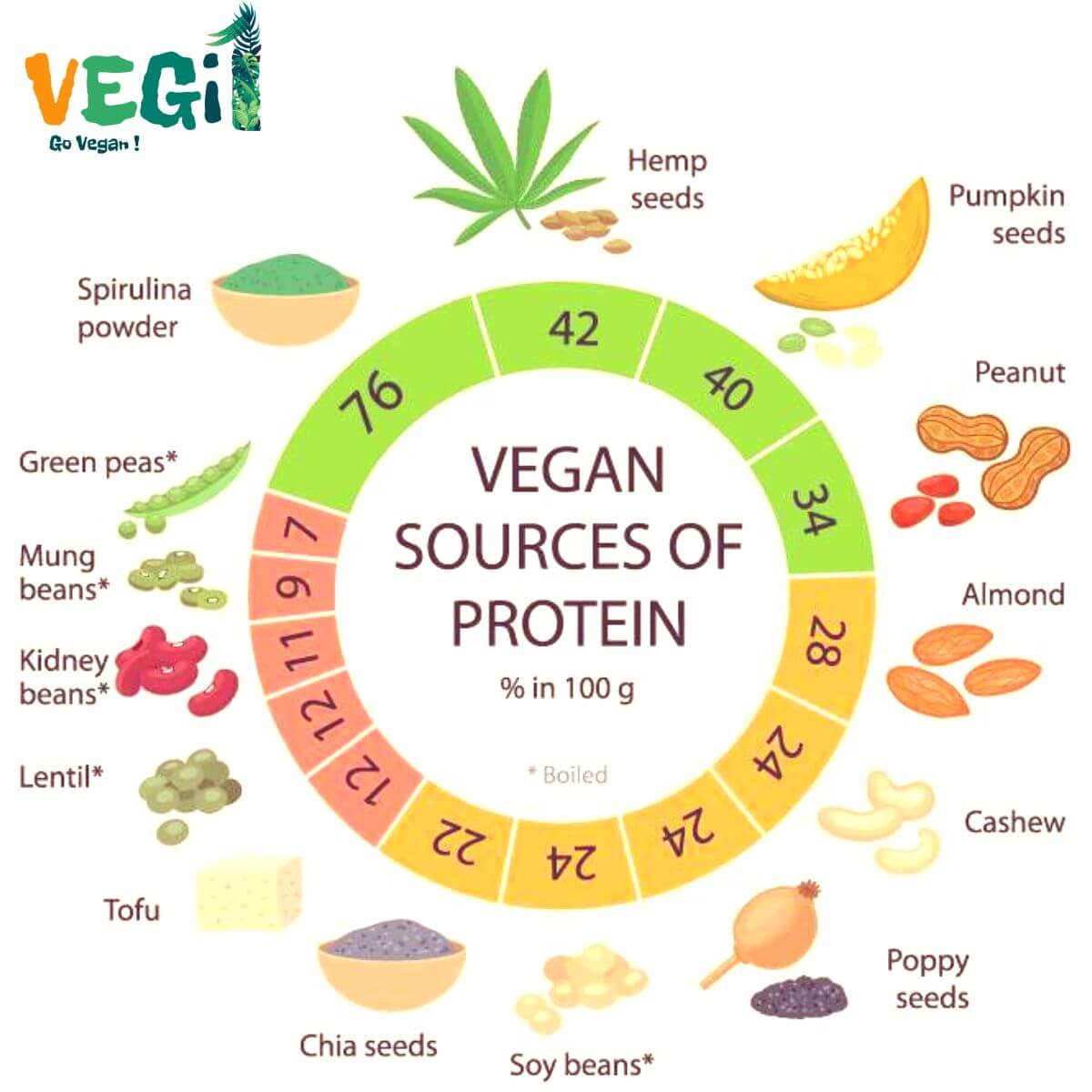
Nuts:
Here is the amount of protein in some nuts that I collected, both raw and roasted:
| Nut | Total Fat (g) | Fiber (g) | Protein (g) | Fatty Acids (g) |
| Raw Cashew | 12.4 | 0.936 | 5.16 |
Saturated: 6.28, Monounsaturated: 24.4 Polyunsaturated: 15.6
|
| Raw Almond | 14.1 | 3.54 | 6.01 |
Saturated: 1.08, Monounsaturated: 8.96, Polyunsaturated: 3.49
|
| Raw Walnut | 18.5 | 1.9 | 4.31 |
Saturated: 1.74, Monounsaturated: 2.53, Polyunsaturated: 13.4
|
| Raw Brazil Nut | 19 | 2.13 | 4.05 |
Saturated: 4.56, Monounsaturated: 6.78, Polyunsaturated: 6.92
|
| Peanut Raw | 22.8 | 8.5 | 49.2 |
Saturated (7.24), Monounsaturated (31.47), Polyunsaturated (11.45)
|
| Pistachio Raw | 20.16 | 10.3 | 45.33 |
Saturated (0.95), Monounsaturated (33.92), Polyunsaturated (10.46)
|
How to consume nuts in order to get enough protein in raw vegan diet?
Using nuts in a raw vegan diet can be a good source of protein and healthy fats. Below are some of my guidelines for including nuts in a raw vegan diet:
You can make all kinds of cheese sauce, curd, yogurt and vegan dairy products with raw nuts.
Add walnuts and some salt and water to the blender, pour a spoonful of vinegar and a spoonful of lemon juice and make a delicious vegan curd.
You can make vegan cheese with pumpkin seeds or sunflower seeds.
Soak the seeds the night before and then have a smooth and delicious tofu with some water and nutritional yeast, lemon and salt.
You can make vegan yogurt with some cashews that have been soaked overnight.
You can pour raw nuts on salads and serve
There is a lot of protein in each handful of pumpkin seeds and other nuts. You can put some raw nuts in a food processor and use them to make a variety of desserts.
Serve a handful of raw almonds and walnuts with vegan banana ice cream .Or you can use different types of nuts milk soaked with nut and made with water. This combination is very nutritious for people who plan to eat a vegetarian diet.
Which Vegan Foods Are High in Protein?
Vegetables:
Here is the amount of protein in some vegetables that I collected, both raw and cooked:
| Spinach | Cabbage | Broccoli
|
Onion | Tomato | Cucumber | |
| Raw | Approximately 5 grams of protein per cup (180 grams( | Approximately 4 grams of protein per cup (156 grams) | Approximately 4 grams of protein per cup (156 grams) | Approximately 2 grams of protein per cup (210 grams( | Approximately 1.9 grams of protein per cup (180 grams( | Approximately 0.9 grams of protein per cup (104 grams( |
| Cooked | Approximately 2 grams of protein per cup (30 grams( | Approximately 2 grams of protein per cup (70 grams) | Approximately 2.5 grams of protein per cup (91 grams( | Approximately 1.5 grams of protein per cup (160 grams( | Approximately 1.1 grams of protein per cup (180 grams( | Approximately 0.6 grams of protein per cup (104 grams( |
How are vegetables consumed in a raw vegan diet?
In our raw vegan diet, vegetables are one of the main and most important sources of food. To consume vegetables in a plant-based diet correctly, you can use my methods below:
It is better to have different vegetables in your daily meal plan. Some of the main essential tools for the raw vegan diet are a food processor and blender. Vegetables such as spinach, salary, and cabbage can be added to your daily smoothies. Add your vegetables to the blender with some fruits, and enjoy your green smoothie!
You can chop your vegetables by using a food processor and prepare a delicious dinner with them. Imagine the delicious and great salads that you can make with different seasonal vegetables you have.
If you want to make a good sandwich, I suggest using grated zucchini, carrot and cucumber. You can add your own raw vegan sauce by mixing tahini, lemon, salt and garlic. You might have heard about this sauce because it’s famous and is usually used in falafel wraps.
One of the famous raw vegan meals using vegetables is the zucchini salad. In this salad, you can shred some zucchini in a bowl and then add some salt, paprika, spinach, carrot, tomato and raw vegan sauce.
Grains:
Here is the amount of protein in some grains that I collected, both raw and cooked:
| Chickpeas | Black beans | Brown rice | Wheat | Barley | Corn | |
| Raw | Approximately 20 grams of protein per cup (200 grams) | Approximately 18 grams of protein per cup (200 grams) | Approximately 6 grams of protein per cup (185 grams( | Approximately 16 grams of protein per cup (185 grams( | Approximately 13 grams of protein per cup (195 grams( | Approximately 5.5 grams of protein per cup (166 grams( |
| Cooked | Approximately 14 grams of protein per cup (200 grams) | Approximately 15 grams of protein per cup (200 grams( | Approximately 5 grams of protein per cup (185 grams( | Approximately 6 grams of protein per cup (185 grams( | Approximately 8 grams of protein per cup (195 grams( | Approximately 4 grams of protein per cup (166 grams( |
How do you consume grains in a raw vegan diet?
Brown rice, chickpeas, black beans, black peas, rolled oats, lentils, and mung beans have the highest amount of protein, but as you know, cooking can reduce the nutrients in the food, so I soak the beans the night before, then soak them in water. I put in a food processor and made a raw vegan burger with some vegetables such as carrots, spinach, basil leaves, and pumpkin.
You can also soak brown rice the night before and steam it at a temperature of less than 180 degrees.
I use lentils, wheat and mung beans in the form of sprouts, soak them for several days and serve the sprouts in a salad with lemon sauce, salt and paprika.
Oats are also a good source of protein and are very versatile. You can put them in smoothies or eat them as a breakfast cereal bowl with raisins, walnuts, and bananas, or prepare milk and buttermilk from it.
Seeds:
How to consume seeds in a raw vegan diet?
Seeds are the main source of protein and cooking them can reduce the amount of protein in seeds, usually seeds like chia seeds and pumpkin seeds. We put chia seeds or hemp seeds in smoothies and salad toppings. This is how we use it. We can also make vegan milk, cheese, yogurt and raw dairy products from pumpkin seeds and sunflower seeds.
In many vegan recipes, I add flax seed powder or chia acid to make the ingredients stick together.
Raw vegan high protein recipes
To answer this question, here are some vegetarian recipes that I prepared and made a lot before:
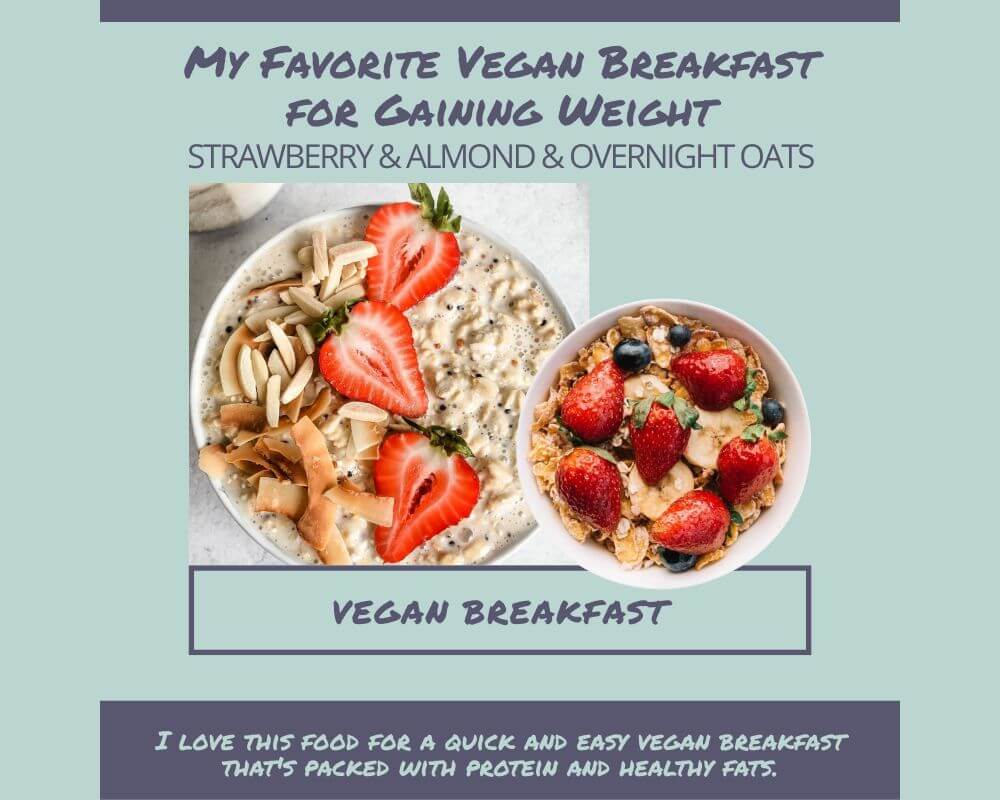
-
Overnight oats:
I am happy to help you with this recipe for overnight oats. Here’s one that I think you’ll definitely love:
Ingredients:
1/2 cup rolled oats
1/2 cup unsweetened almond milk
1/2 teaspoon vanilla extract
Pinch of salt
Your choice of toppings (e.g. sliced fruit, nuts, seeds )
Instructions:
In a mason jar or a large bowl, mix the oats, almond milk, yogurt, honey, vanilla extract, and salt. Stir until well combined.
Cover the jar or bowl with a lid or plastic wrap and refrigerate overnight (or at least 4 hours .(In the morning, add your lovely toppings and enjoy! I usually use berries for topping!
Note: You can customize this recipe to your liking by using different types of milk (e.g. hazelnut milk, soy milk, etc), adding different spices or flavorings (e.g. cinnamon, nutmeg, etc), or using different types of sweeteners (e.g. maple syrup, agave nectar, etc(. I personally like to use hazelnut milk sometimes!
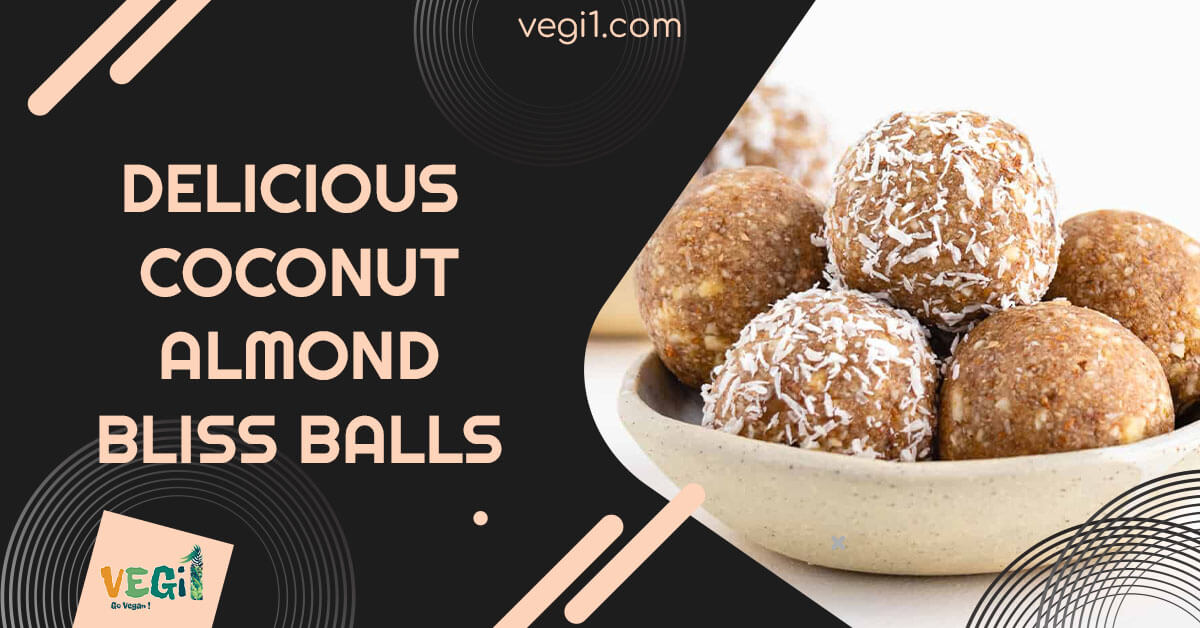
-
Raw power balls:
Here’s my favorite recipe for raw power balls that is easy to make and packed with nutritious ingredients:
Ingredients:
2 cups rolled oats
1/2 cup almond butter
1/4 cup hemp seeds
1/4 cup chia seeds
1/4 cup shredded coconut
1/4 cup of dried cranberries or any fruit you like
1/4 cup nut butter (such as peanut butter or almond butter(
1 tablespoon of maple syrup
Pinch of salt
Optional: cinnamon
Instructions:
In a large mixing bowl, mix the oats, almond butter, hemp seeds, chia seeds, and shredded coconut. Mix until well combined.
In that bowl, add your dried fruit, nut butter, a bit of honey or maple syrup, and a little salt. Mix until a sticky dough forms.
If you like some sweetness and spice, add chocolate chips or cinnamon to the dough for extra flavor. I add cinnamon to mine, all the time!
These raw strength balls are a super snack or breakfast option, and they’re packed with healthful fats, protein, and fiber. You may also personalize the recipe for your liking with the aid of including exceptional kinds of nuts, seeds, or dried fruit. I’m hoping you’re making this favorite recipe of mine and experience it whenever you like.
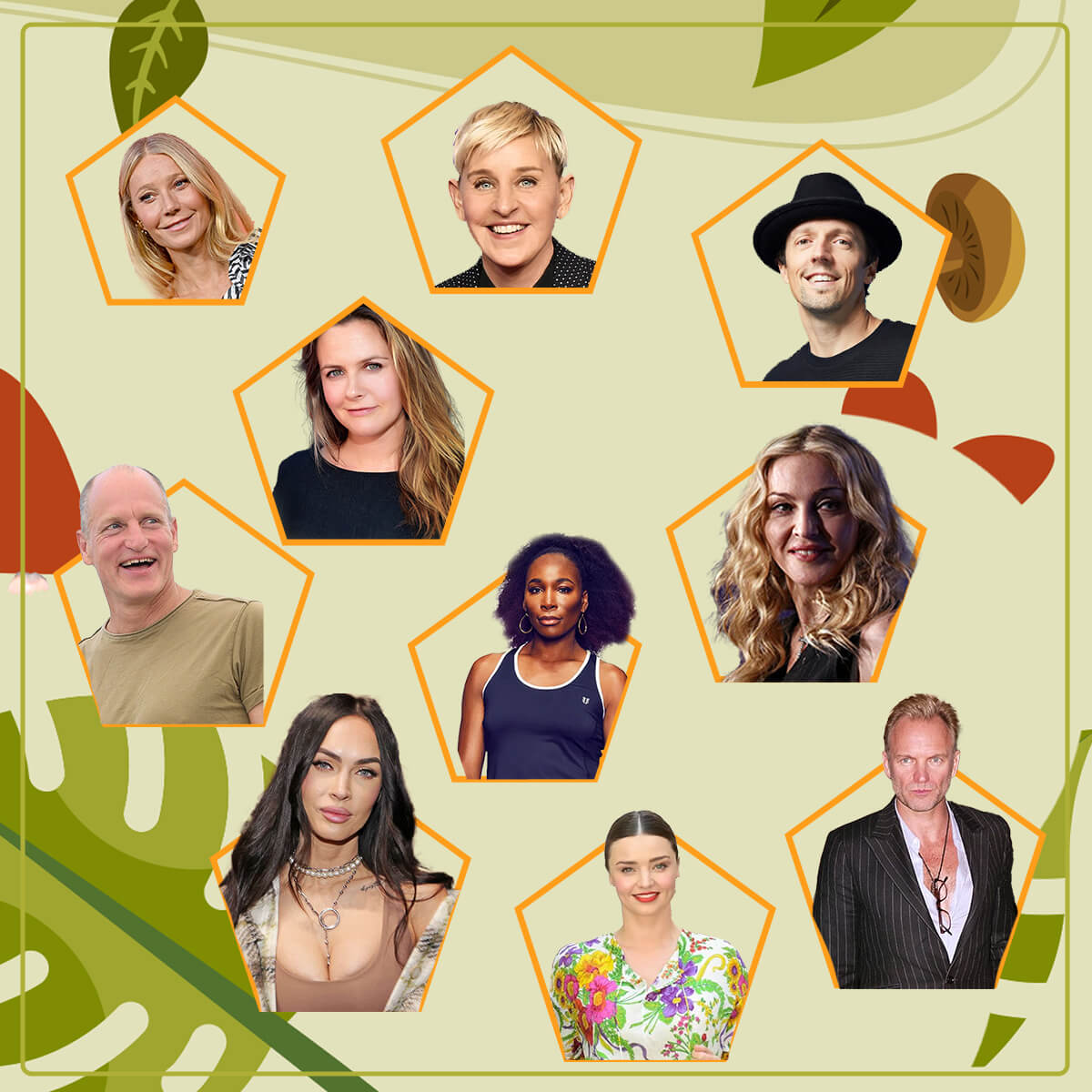
Famous raw vegan athletes
You will be surprised about the number of athletes who are plan-based vegan. Carl Lewis is one of them. He is an American runner. He said that being vegan for more than 25 years always gave him that amazing boost of energy during his running career!
Another famous runner who is a raw vegan is Denis Mikhaylove. He said he changed his diet overnight and he never looked back!
Venus Williams, the sister of the tennis queen, is also another famous vegan athlete who you might have heard about a lot. She shared a lot about her vegan diet on Instagram, too! She followed this diet for more than 10 years!
10 Famous Raw Vegans You Should Know
Effects of protein-packed raw foods on the body:
Having a vegetarian diet and consuming protein-packed raw foods are very beneficial for the health of your body. This style of nutrition and diet is suitable for anyone who has a temper and I assure you that anyone can do this diet at any time with the consultation of a doctor. I prepared some of the benefits of a vegan diet for physical health below:
A raw vegan diet focuses on eating fresh vegetables, grains and seeds. In the raw vegan diet, the body returns to its natural state after the detoxification period. Many diseases like diabetes, cancer, infections and intestinal problems can be treated through this diet! Many of the diseases above are caused by eating artificial and processed food! So you should be careful because artificial food can cause a lot of health risks and they can be easily found in chips, sodas, breads and some other processed foods!
People who usually do this diet, have a special freshness and happiness! This diet is also very good for your hair because vitamins can enter your body directly without being cooked!
A raw vegan weight loss program has been shown to decrease the hazard of coronary heart disorder by decreasing the intake of saturated fats and LDL cholesterol, which can be discovered in animal products. I remember I did this program for a while.
You should know that Vegan diets tend to be lower in calories and better in fiber, which can help with weight loss. I lost a few pounds after doing this program. Vegan diets are usually low in refined sugars and high in fiber, which can help alter blood sugar tiers.
Some researchers have discovered that a raw vegan eating regimen may also lower the chance of certain cancers, along with colon, breast, and prostate cancer. A raw vegan food plan high in fiber can increase the beneficial gut micro-organisms and improve digestive health. I remember I struggled a lot with digestion and this program helped a lot.
Vegan diets decrease animal protein, which may help reduce the chance of kidney disorders. raw vegan diets include a lot of calcium and different minerals, which can help with strong bones and reduce the danger of osteoporosis.
This diet decreases the danger of autoimmune sicknesses. some researchers have discovered that a vegan weight loss plan may also lower the danger of autoimmune sicknesses consisting of more than one sclerosis and rheumatoid arthritis.
A raw vegan diet includes lots of fruits, greens, and wholesome fats that can help elevate your skin and reduce the chance of pimples and other skin conditions. Before doing this diet, I had a lot of skin issues. After I started this diet, my skin issues went away.
Vegan diets avoid animal products, that can reduce the risk of foodborne illnesses consisting of salmonella and E. Coli. It’s important to understand that a vegan weight loss plan that consists of plant-based raw foods can offer all the important nutrients for accurate fitness. But, I suggest visiting a healthcare expert or a registered dietitian to ensure that your raw vegan weight loss plan is well-balanced.
- The Impact of Raw Vegan Foods on Bone Density & Osteoporosis Prevention
- The Impact of Raw Vegan Diet on Dental Health & Oral Hygiene
- The Benefits of a Raw Vegan Diet for Promoting Healthy Aging
How to start the protein-packed raw food diet?
If you want to try this protein-packed raw food regimen but don’t know in which to begin, right here I will provide you with a tremendous start to your diet. Right here are a few guidelines I prepared for transitioning to a vegan food plan:
Find the right equipment: blenders, mixers, food processors, and ovens are the essential tools to make your home-cooked meals in this diet. Equip your kitchen with these today!
-
Know the time and percentage
Begin by changing one or two raw meals per day with raw vegan options.
Start with a 20-80 diet, which means that 80% of the food should be eaten raw during the day, and a light-cooked dinner at 4-5 pm in the afternoon!
I personally started by adding vegan breakfast alternatives like oatmeal, or fruit smoothies to my breakfast.
-
Know the temperature
Foods should be eaten completely raw or heated to less than 104 to 118 degrees Fahrenheit (40 to 48 degrees Celsius).
You can use water below 40 degrees to make herbal tea
For example, you can half-cook beans and rice at a temperature lower than 180 or heat burgers at oven temperature.
-
Burger
Yes, you can make a burger but it’s a raw version! With a food processor, you can make all kinds of burgers with raw vegan mixes. Don’t forget zucchini and carrots to prepare new raw burgers and sandwiches.
-
Stock the fridge
Fill your fridge with fresh fruits and berries beforehand so when you feel hungry, you can eat fruit. You shouldn’t overdo eating fruits though. Eat only one or two apples a day! Eat an orange for the next hour!
Fresh fruits and vegetables are the main basis of this diet, so I suggest that you, like me, make a small garden in your terrace and plant vegetables.
-
Body reaction
Your body detoxifies during the first 40 days of raw veganism, so if you have hair loss or feel weak, your body is not reacting to the change!
-
Do not neglect raw vegan desserts and teas
If you are used to drinking coffee, use herbal teas with 40-degree water and mint, coriander seeds, thyme or your favorite herb to give you the same daily energy! Treat yourself to rawuse herbal vegan sweets like raw vegan cheesecake and raw vegan ice cream every day!
-
Discover incredible cuisines:
Try raw vegan variations of your favorite dishes from distinct cultures collectively with raw vegan sushi, Indian curries, or raw mexican tacos. I personally like Korean and Arabic raw vegan cousins a lot.
https://www.bbcgoodfood.com/recipes/collection/raw-vegan-recipes
-
Inventory your pantry:
Hold a nicely stocked pantry with vegan staples like grains, legumes, nuts, seeds, and spices. This will make it easier to whip up a vegan meal whilst you’re short on time. If you are on a run, pack some nuts!
You should avoid processed foods that contain excess sugar, salt, and saturated fat
It is also forbidden to consume processed oils, pasta products, refined flour, sweets, biscuits, coffee, alcohol, and baked goods in this diet.
-
Plan ahead:
Make a meal plan for the week and save therefore. This can help you avoid relying on convenience foods or rapid meals. I usually make my weekly food ahead and keep it in a fridge.
-
Consider calcium:
Calcium is crucial for bone health. I personally drink a lot of almond milk every day.
Best Vegan Sources of Calcium for Strong Bones
-
Ask for help:
proportion your raw vegan journey with friends and circle of relatives, and consider becoming a member of a raw vegan community or assist an organization for motivation and advice. There are many raw food recipes and raw lifestyle pages on Instagram that you can follow.
I hope this article has helped you to answer the question “How raw Vegans Get enough protein:.
Conclusion:
A large portion of this diet consists of whole grains, fruits and vegetables, legumes and nuts. Research has shown that the raw vegetarian diet has a large amount of fiber, antioxidants, vitamins A, E, C, potassium and magnesium, etc., which can help rejuvenate the skin and have anti-cancer properties due to the presence of antioxidants. Reduction of blood pressure, reduction of blood cholesterol, and reduction of fat accumulation in the walls of the vessels are among the consequences of high consumption of fruits, vegetables, nuts and dried fruits, which will ultimately lead to improvement of heart function and prevention of cardiovascular diseases.
Raw food diet have high amounts of fiber, which is associated with lowering blood sugar. Type 2 diabetes can be prevented by consuming foods with high fiber. Raw vegetarianism plays a role in weight loss and is associated with a decrease in body fat.
If you have been on a raw vegan diet for a long time, you can exercise without worry like the famous athletes of the world who have adopted a raw vegetarian diet, but if you have just started this diet, I suggest you rest your body and let the body go through the period of change and detoxification, and then you can Start exercising.
In this article, we talked about great sources of protein in a raw vegan diet. I hope this information is useful for you.
Don’t forget to give feedback to my article and write me in the comments if you have any comments.
